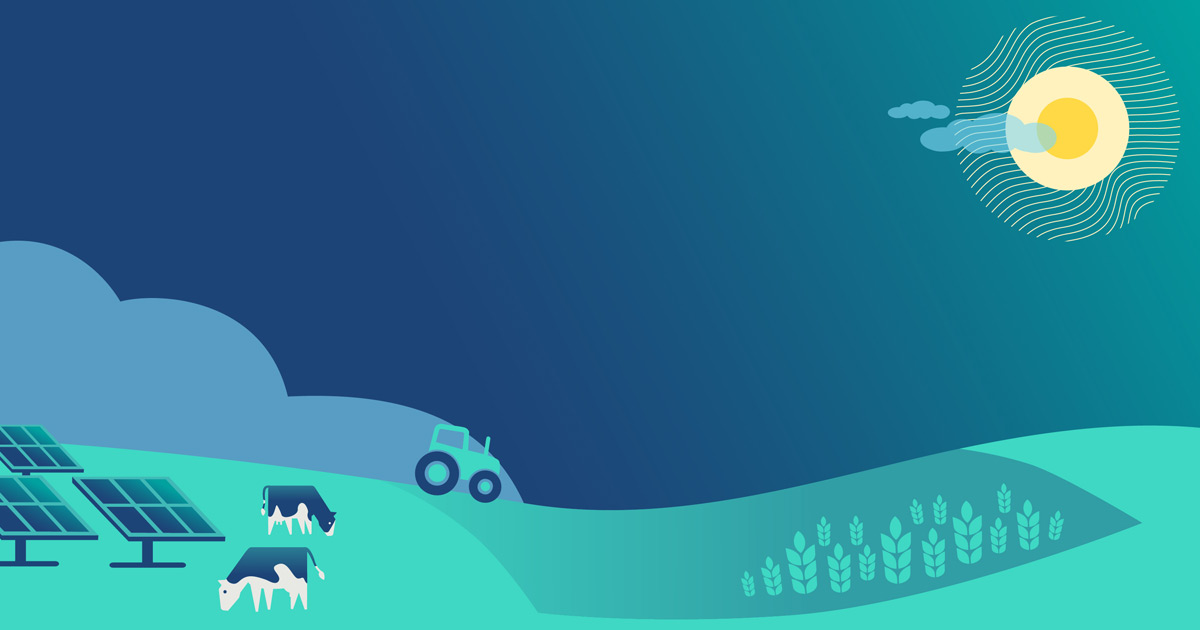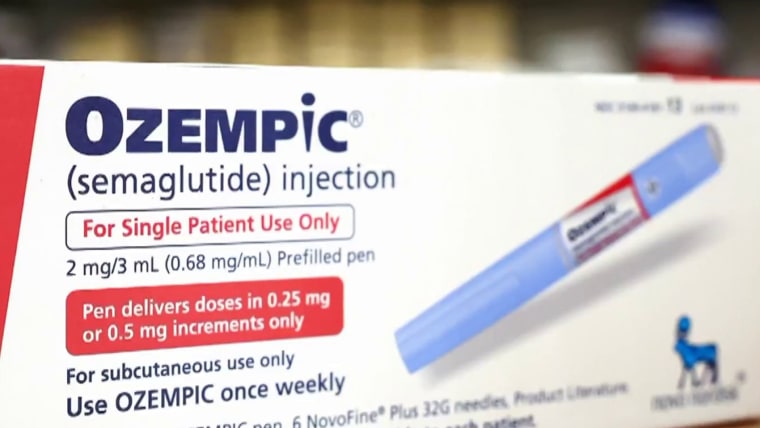Data Sovereignty Fuels Sustainable Agriculture Innovation Equity – BIOENGINEER.ORG

Report on a Data Sovereignty and Valuation Model for Sustainable Agriculture
1.0 Introduction: Aligning Agricultural Innovation with Sustainable Development Goals
A new research framework by Gans Combe and S. Camaréna introduces a data sovereignty and valuation model designed to address critical challenges in sustainable agriculture. This model directly supports the achievement of multiple United Nations Sustainable Development Goals (SDGs) by restructuring the control, valuation, and utilization of agricultural data. It aims to correct asymmetries in the digital agricultural economy, thereby fostering equity and innovation, which are central tenets of SDG 10 (Reduced Inequalities) and SDG 9 (Industry, Innovation and Infrastructure).
2.0 The Core Problem: Data Asymmetry and its Impact on SDGs
The digital transformation of agriculture relies on vast datasets, yet the benefits are often inequitably distributed. This imbalance hinders progress toward key development goals.
- Exacerbated Inequality (Contravenes SDG 10): Opaque data ownership models often marginalize smallholder farmers, preventing them from benefiting economically from the data they generate.
- Impediments to Food Security (Contravenes SDG 2): When farmers lack control over their data, it can limit their access to innovations that would improve productivity and resilience, thereby affecting global efforts to achieve Zero Hunger.
- Unsustainable Practices: Without localized data control, interventions may not be tailored to specific ecological contexts, undermining efforts related to SDG 13 (Climate Action) and SDG 12 (Responsible Consumption and Production).
3.0 The Proposed Framework: Data Sovereignty as a Catalyst for Sustainability
The model establishes data sovereignty—the right of individuals and communities to control their own data—as a foundational principle for a more equitable and sustainable agricultural system.
- Empowerment of Smallholder Farmers: By placing data ownership in the hands of farmers, the model directly addresses SDG 10 (Reduced Inequalities) and supports SDG 8 (Decent Work and Economic Growth) by creating new income streams and enhancing livelihoods.
- Multidimensional Valuation: The framework moves beyond simple market pricing to a valuation model that incorporates contributions to equity, trust, and innovation. This holistic approach ensures that data’s value is measured by its ability to advance societal goals, including food security (SDG 2) and environmental stewardship.
- Ethical Governance: The model integrates governance mechanisms to ensure fair compensation and user control, fostering a trustworthy ecosystem for data sharing that is essential for building effective partnerships (SDG 17).
4.0 Technological Architecture for Resilient and Inclusive Systems
The model leverages advanced technologies to build a resilient digital infrastructure (SDG 9) that is both transparent and secure.
- Blockchain and Decentralized Storage: These technologies provide an immutable and verifiable record of data transactions, ensuring transparency and accountability.
- Smart Contracts: Automated enforcement of data rights, royalty payments, and usage licenses reduces transaction costs and removes intermediaries, democratizing access to the data economy for marginalized producers.
5.0 Direct Contributions to Key Sustainable Development Goals
5.1 SDG 2: Zero Hunger
The framework enhances food security by enabling smallholders to leverage their data for improved agronomic practices and market access. By ensuring data is contextualized, it supports sustainable intensification and resilient agricultural systems.
5.2 SDG 10: Reduced Inequalities
This is a central focus of the model. By democratizing data ownership and valuation, it provides a direct pathway for smallholders to participate meaningfully in the global digital food economy, reducing the power imbalance between them and large agribusinesses.
5.3 SDG 9: Industry, Innovation and Infrastructure
The model represents a significant innovation in digital infrastructure for agriculture, creating a fair, transparent, and resilient ecosystem that can be scaled to support inclusive and sustainable development.
5.4 SDG 13: Climate Action
Data sovereignty ensures that environmental data collected from farms is accurate and reflects local socio-economic realities. This allows for the development of targeted, effective, and just climate adaptation and mitigation strategies in agriculture.
6.0 Implementation, Policy Implications, and Future Directions
Pilot projects utilizing the model have demonstrated its potential, showing increased trust and more equitable benefit distribution among participants. The framework provides a practical blueprint for policymakers aiming to align digital agriculture policies with the 2030 Agenda for Sustainable Development.
- Scaling and Interoperability: A key challenge is scaling the model globally. This requires collaborative partnerships (SDG 17) to develop open standards that uphold data sovereignty while ensuring system interoperability.
- Broader Applications: The principles of this model can be applied to other sectors such as fisheries, forestry, and urban food systems, extending its potential impact across a wider range of SDGs.
7.0 Conclusion
The data sovereignty and valuation model developed by Combe and Camaréna offers a transformative approach to agricultural innovation. By embedding principles of equity and empowerment within a sophisticated technological framework, it provides a clear pathway for ensuring that the digital revolution in agriculture contributes positively and directly to achieving the Sustainable Development Goals, particularly those related to hunger, inequality, and climate action.
Analysis of Sustainable Development Goals in the Article
-
Which SDGs are addressed or connected to the issues highlighted in the article?
The article on data sovereignty in sustainable agriculture addresses several interconnected Sustainable Development Goals (SDGs). The primary SDGs identified are:
- SDG 2: Zero Hunger: The article is fundamentally about improving agriculture, which is central to food security. It focuses on “sustainable agriculture,” “global food security,” and enhancing the livelihoods of “smallholder farmers,” who are key actors in the global food system. The proposed model aims to create a more resilient and productive agricultural sector.
- SDG 10: Reduced Inequalities: A core theme is tackling the “asymmetries in who benefits” from agricultural data. The concept of data sovereignty is presented as a tool to “foster equity across farming communities” and empower “marginalized” smallholders. By giving farmers control over their data, the model aims to ensure a more “equitable distribution of economic benefits” and reduce power imbalances.
- SDG 9: Industry, Innovation, and Infrastructure: The article details a “sophisticated valuation model” and a “resilient digital infrastructure” that leverages “blockchain technologies and decentralized data storage solutions.” This represents a significant technological innovation aimed at upgrading the agricultural sector and making it more efficient and transparent.
- SDG 13: Climate Action: The article mentions that sustainable agriculture innovation relies on data related to “climate patterns.” The model supports the development of “targeted interventions” that are locally relevant, which is crucial for building resilience and adapting to the impacts of climate change on agriculture.
- SDG 17: Partnerships for the Goals: The conclusion explicitly calls for “collaborative partnerships across sectors to develop standards and protocols.” This highlights the need for cooperation between farmers, agribusinesses, data scientists, and policymakers to scale the framework globally and achieve the desired sustainable development outcomes.
-
What specific targets under those SDGs can be identified based on the article’s content?
Based on the article’s discussion, several specific SDG targets can be identified:
- Target 2.3 (under SDG 2): By 2030, double the agricultural productivity and incomes of small-scale food producers… The article directly addresses this by proposing a model that allows smallholder farmers to “generate income through data-sharing agreements” and “translate [their data] into enhanced livelihoods,” thereby increasing their participation in the digital economy.
- Target 2.4 (under SDG 2): By 2030, ensure sustainable food production systems and implement resilient agricultural practices… The framework is designed for “sustainable agriculture innovation” and supports “sustainable intensification without compromising farmer agency or ecological integrity.” The use of data on soil, water, and climate helps implement more resilient farming practices.
- Target 10.2 (under SDG 10): By 2030, empower and promote the social, economic and political inclusion of all… The model’s primary goal is to empower “smallholders, often marginalized in global agribusiness,” by giving them ownership and control over their data. This “democratize[s] agricultural innovation” and allows them to “participate meaningfully in the digital economy.”
- Target 9.5 (under SDG 9): Enhance scientific research, upgrade the technological capabilities of industrial sectors… encouraging innovation. The article describes a “cutting-edge data science” framework that integrates “blockchain technologies” and “modular valuation algorithms.” This represents a significant technological upgrade for the agricultural sector, fostering innovation in data management and valuation.
- Target 13.1 (under SDG 13): Strengthen resilience and adaptive capacity to climate-related hazards and natural disasters in all countries. By using data on “climate patterns,” the model allows for the development of “targeted interventions that are both locally relevant and scalable,” which directly enhances the adaptive capacity of farming communities to climate events.
- Target 17.17 (under SDG 17): Encourage and promote effective public, public-private and civil society partnerships… The article concludes by advocating for “collaborative partnerships across sectors” to develop standards and protocols, which is essential for the model’s success and aligns perfectly with building effective multi-stakeholder partnerships.
-
Are there any indicators mentioned or implied in the article that can be used to measure progress towards the identified targets?
While the article does not list official SDG indicators, it implies several metrics that can be used to measure progress towards the identified targets:
- For Target 2.3: Progress could be measured by tracking the increase in income generated by farmers through data-sharing agreements. The article mentions that pilot projects show farmers can “generate income” this way. Another indicator would be the degree of equitable distribution of economic benefits among stakeholders in the value chain.
- For Target 2.4: An implied indicator is the adoption rate of sustainable and resilient farming practices developed from insights gained through the data-sharing model. The model’s ability to ensure environmental data is “accurate and complete” supports this.
- For Target 10.2: The level of empowerment can be measured by the degree of control farmers retain over their data (e.g., the number of farmers utilizing smart contracts to manage data rights). Another indicator is the level of participation of smallholder farmers in the agricultural digital economy.
- For Target 9.5: The article mentions “pilot projects that integrate real-time agronomic data collection.” An indicator of progress would be the number of pilot projects successfully implemented and scaled. The overall rate of adoption of the data sovereignty framework by farming communities and agribusinesses would also measure technological uptake.
- For Target 13.1: An indicator would be the number and effectiveness of targeted interventions (e.g., climate-resilient crop choices, water management strategies) developed and implemented based on the data collected and analyzed through the system.
- For Target 17.17: Progress can be measured by the number of cross-sectoral partnerships formed to develop standards and protocols for data sovereignty, as advocated for in the article’s conclusion.
-
Create a table with three columns titled ‘SDGs, Targets and Indicators” to present the findings from analyzing the article.
SDGs Targets Indicators (as implied in the article) SDG 2: Zero Hunger 2.3: Double the incomes and productivity of small-scale food producers.
2.4: Ensure sustainable and resilient food production systems.– Increase in income for farmers from data-sharing agreements.
– Adoption rate of sustainable farming practices based on data insights.SDG 10: Reduced Inequalities 10.2: Empower and promote the social, economic, and political inclusion of all. – Degree of control farmers have over their data.
– Level of participation of smallholders in the digital agricultural economy.SDG 9: Industry, Innovation, and Infrastructure 9.5: Enhance scientific research and upgrade technological capabilities. – Number of pilot projects implementing the new technology.
– Rate of adoption of the data sovereignty framework by stakeholders.SDG 13: Climate Action 13.1: Strengthen resilience and adaptive capacity to climate-related hazards. – Number of targeted, locally relevant interventions developed from climate data. SDG 17: Partnerships for the Goals 17.17: Encourage and promote effective public, public-private and civil society partnerships. – Number of collaborative, cross-sector partnerships established to develop standards.
Source: bioengineer.org
What is Your Reaction?
 Like
0
Like
0
 Dislike
0
Dislike
0
 Love
0
Love
0
 Funny
0
Funny
0
 Angry
0
Angry
0
 Sad
0
Sad
0
 Wow
0
Wow
0
















































:focal(1500,1000)/https://media.globalcitizen.org/a6/9a/a69a4720-d8a1-4715-b596-18738d03c05c/rotary_polio_hero_image.jpg?#)







/countries/sri-lanka/photo-credit---dmc-sri-lanka.tmb-1200v.jpg?sfvrsn=dc298bcc_1#)

















